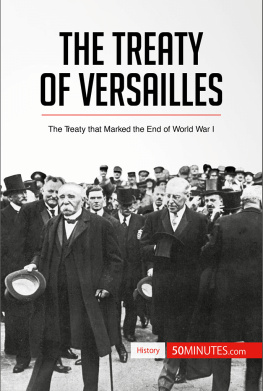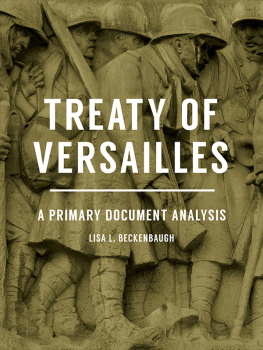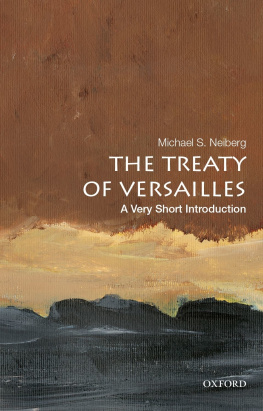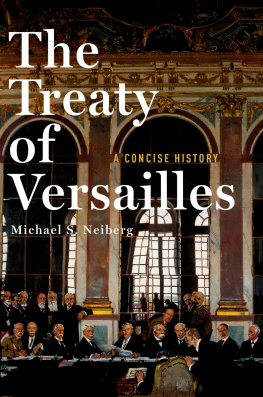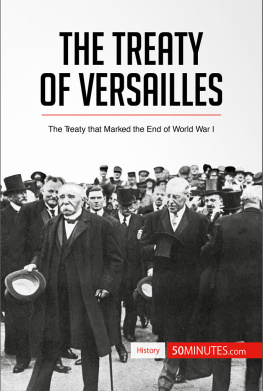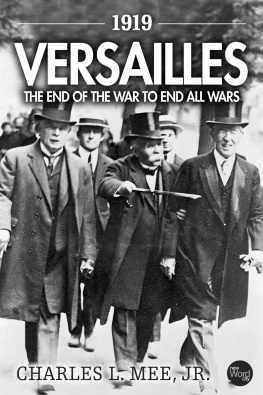50MINUTES.COM - The Treaty of Versailles
Here you can read online 50MINUTES.COM - The Treaty of Versailles full text of the book (entire story) in english for free. Download pdf and epub, get meaning, cover and reviews about this ebook. year: 2017, publisher: 50Minutes.com, genre: Politics. Description of the work, (preface) as well as reviews are available. Best literature library LitArk.com created for fans of good reading and offers a wide selection of genres:
Romance novel
Science fiction
Adventure
Detective
Science
History
Home and family
Prose
Art
Politics
Computer
Non-fiction
Religion
Business
Children
Humor
Choose a favorite category and find really read worthwhile books. Enjoy immersion in the world of imagination, feel the emotions of the characters or learn something new for yourself, make an fascinating discovery.
- Book:The Treaty of Versailles
- Author:
- Publisher:50Minutes.com
- Genre:
- Year:2017
- Rating:4 / 5
- Favourites:Add to favourites
- Your mark:
- 80
- 1
- 2
- 3
- 4
- 5
The Treaty of Versailles: summary, description and annotation
We offer to read an annotation, description, summary or preface (depends on what the author of the book "The Treaty of Versailles" wrote himself). If you haven't found the necessary information about the book — write in the comments, we will try to find it.
The Treaty of Versailles — read online for free the complete book (whole text) full work
Below is the text of the book, divided by pages. System saving the place of the last page read, allows you to conveniently read the book "The Treaty of Versailles" online for free, without having to search again every time where you left off. Put a bookmark, and you can go to the page where you finished reading at any time.
Font size:
Interval:
Bookmark:
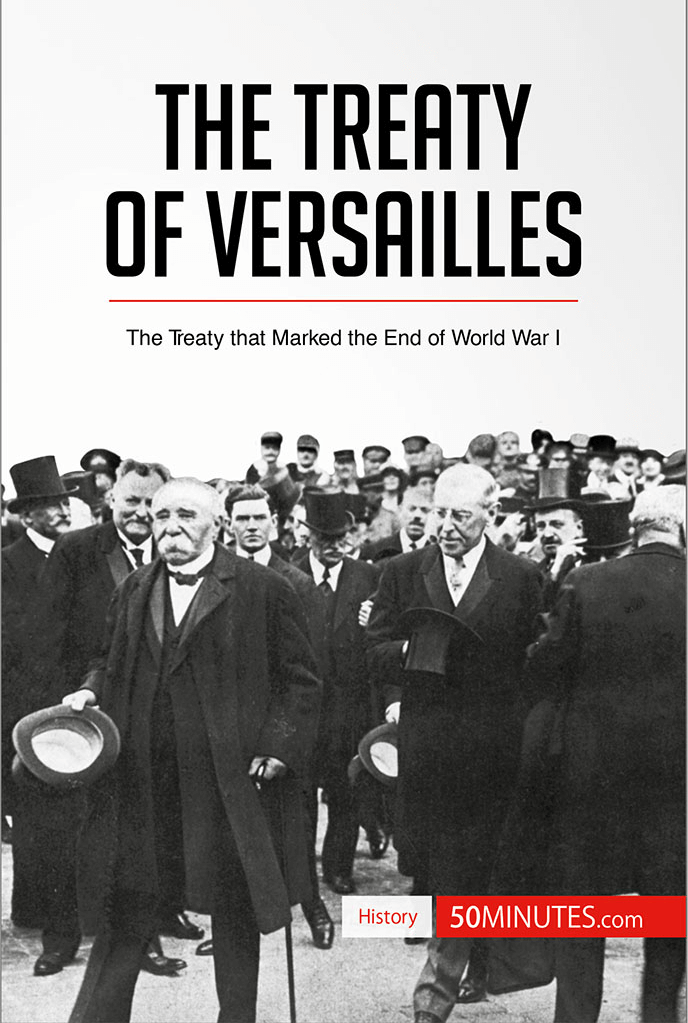
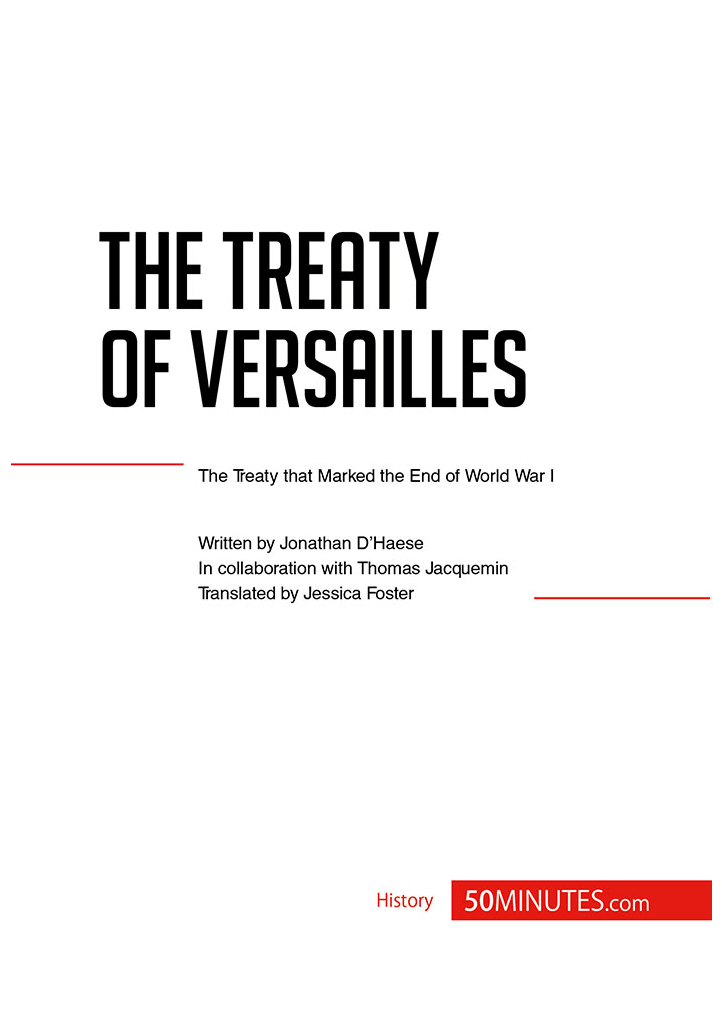

- When: 18 January 1919 10 January 1920.
- Where: Paris.
- Context:
- End of World War I (1914-1918).
- The signing of the Armistice (11 November 1918).
- Key protagonists:
- Georges Clemenceau, French Prime Minister (1841-1929).
- Thomas Woodrow Wilson, US President (1856-1924).
- Vittorio Orlando, Italian Prime Minister (1860-1952).
- David Lloyd George, British Prime Minister (1863-1945).
- Impact:
- The creation of the League of Nations in 1919.
- Rivalry between the European Allies.
- The weakening of the great Western powers.
- The rise of nationalism.
The Treaty of Versailles marked the end of the First World War between Germany and the Allies, represented by Georges Clemenceau (France), David Lloyd George (Great Britain), Woodrow Wilson (United States) and Vittorio Orlando (Italy). It was signed on 28 June 1919 in the Hall of Mirrors at the Palace of Versailles, the same place where the proclamation of the German Empire had taken place in 1871. By imposing this location on Germany, France wanted to symbolically rid itself of the humiliation endured during the Franco-Prussian War in 1870 by forcing Germany to recognise its responsibilities in the world war.
The terms of the treaty were severe towards the defeated country. An eighth of Germanys territory was annexed and they were forced to give up their colonies to the victors. In addition, they had to give Alsace-Lorraine back to France and pay a heavy fine for damages caused during the war. The treaty also stipulated the abolition of military service, reducing the German army to 100 000 men, in the aim of limiting its power. In order to ensure that the many terms were respected, the Allies planned to occupy the left bank of the Rhine for 15 years.
The German delegates eventually signed the document, which was viewed in Berlin as a humiliating and hostile diktat imposed by the victors. In the end, the treaty was a diplomatic failure. It stirred up rivalries among European powers, anxious to maintain their standing, to the detriment of a damaged Germany, where the seeds of the Second World War were already being sown.
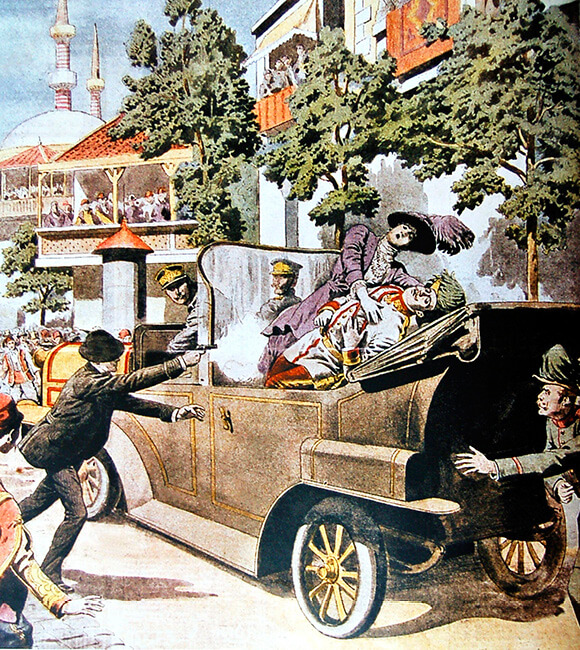
Assassination of Archduke Franz Ferdinand of Austria.
On 28 June 1914, Archduke Franz Ferdinand of Austria (1863-1914) and his wife were shot by the Serb anarchist Gavrilo Princip (1894-1918) in Sarajevo. The European states used this pretext to declare war on each other. On 4 August 1914, the German general Helmuth von Moltke (1848-1916) sent his army towards Paris. He was counting on a quick victory against France, but the resistance mounted by Belgium, then by France, stopped the German advance in its tracks on the banks of the Marne.
The winter of 1914 saw the armies stuck in a war of attrition. For many months, they faced each other on either side of a front line that was over 400 miles long, without any offensive action by either of the warring countries giving an advantage to one side or other. At the beginning of 1918, the situation was critical for the Allies: after four years of fighting, the German Empire dominated Europe, had managed to keep its army intact and had successfully protected its territory from invasion.
On 3 March 1918, the Treaty of Brest-Litovsk (Belarus), a separate peace treaty signed with the Soviets, guaranteed Germany victory in the East. The German general Erich Ludendorff (1865-1937) seized the opportunity to reinforce his troops on the Western front. There he launched three offensives: one in Picardy (21 March), one in Flanders (9 April), then one on the Chemin des Dames (27 May). These operations nearly brought victory to the Germans, who managed to advance 40 miles on the Allied front, reaching Amiens and even threatening Paris in June. However, the resistance mounted by the British and French armies at the Second Battle of the Marne, which lasted from 15 to 20 July 1918, revealed the enemy armys weaknesses and forced them to retreat to the Department of Aisne on 18 July. This was the start of Germanys decline.
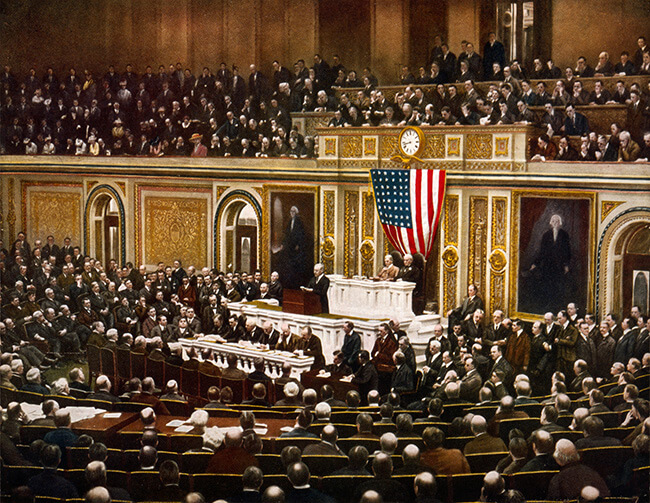
President Wilson asking Congress to declare war on Germany.
The US joined the war in April 1917, and President Woodrow Wilson hoped for a quick victory against the Second Reich, without eliminating it completely. On 8 January 1918, he presented his Fourteen Points to the United States Congress, which set out the necessary conditions for re-establishing peace among the European states following the war. These included the abolition of secret diplomacy, limits on weaponry and the creation of a League of Nations, tasked with ensuring the territorial integrity and sovereignty of the European states.
The American presidents objective was pragmatic. He wanted to persuade the two blocs of the need to reach a balanced peace agreement without annexation, based on the principle of peoples right to self-determination. Initially, the move was a failure. At the beginning of 1918, the military offensives launched in the Somme to destabilise the German front prevented the diplomatic resolution of the conflict. At this stage in the war, Wilson realised that peace was only attainable with the intervention of the American army to allow the balance of power to be reversed in favour of the Allies.
Indeed, after only just managing not to collapse during the German offensives between March and April, the French army had lost all ability to launch major offensives. The position of the British was no more enviable; they were mourning the loss of 236 000 men.
On 26 March 1918, Georges Clemenceau placed the Allied forces situated on the Western front under the sole command of Marshal Ferdinand Foch (1851-1929). On 27 May, the new Allied generalissimo contacted John Pershing (1860-1948), commander of the American Expeditionary Force, to convince him to take part in a general offensive against Germany. But Pershing had just arrived in France with an army corps of just 14 500 men. After lengthy negotiations, Congress agreed to send him a million soldiers who had been mobilised by the Selective Service Act, a law that had enabled conscription in the United States since May 1917.
Reassured by the Americans participation, Foch launched a joint Allied offensive in the Department of the Somme on 8 August 1918. Although only acting as reinforcement, the presence of three million American soldiers in Europe weighed the conflict decisively in favour of the Allies.
By virtue of now having higher numbers of men and artillery, the British managed to break through German lines in Picardy, Artois and Flanders at the end of September. Now in complete disarray, the Prussians were faced with the collapse of their allies in Eastern Europe.
Font size:
Interval:
Bookmark:
Similar books «The Treaty of Versailles»
Look at similar books to The Treaty of Versailles. We have selected literature similar in name and meaning in the hope of providing readers with more options to find new, interesting, not yet read works.
Discussion, reviews of the book The Treaty of Versailles and just readers' own opinions. Leave your comments, write what you think about the work, its meaning or the main characters. Specify what exactly you liked and what you didn't like, and why you think so.

